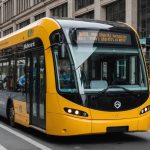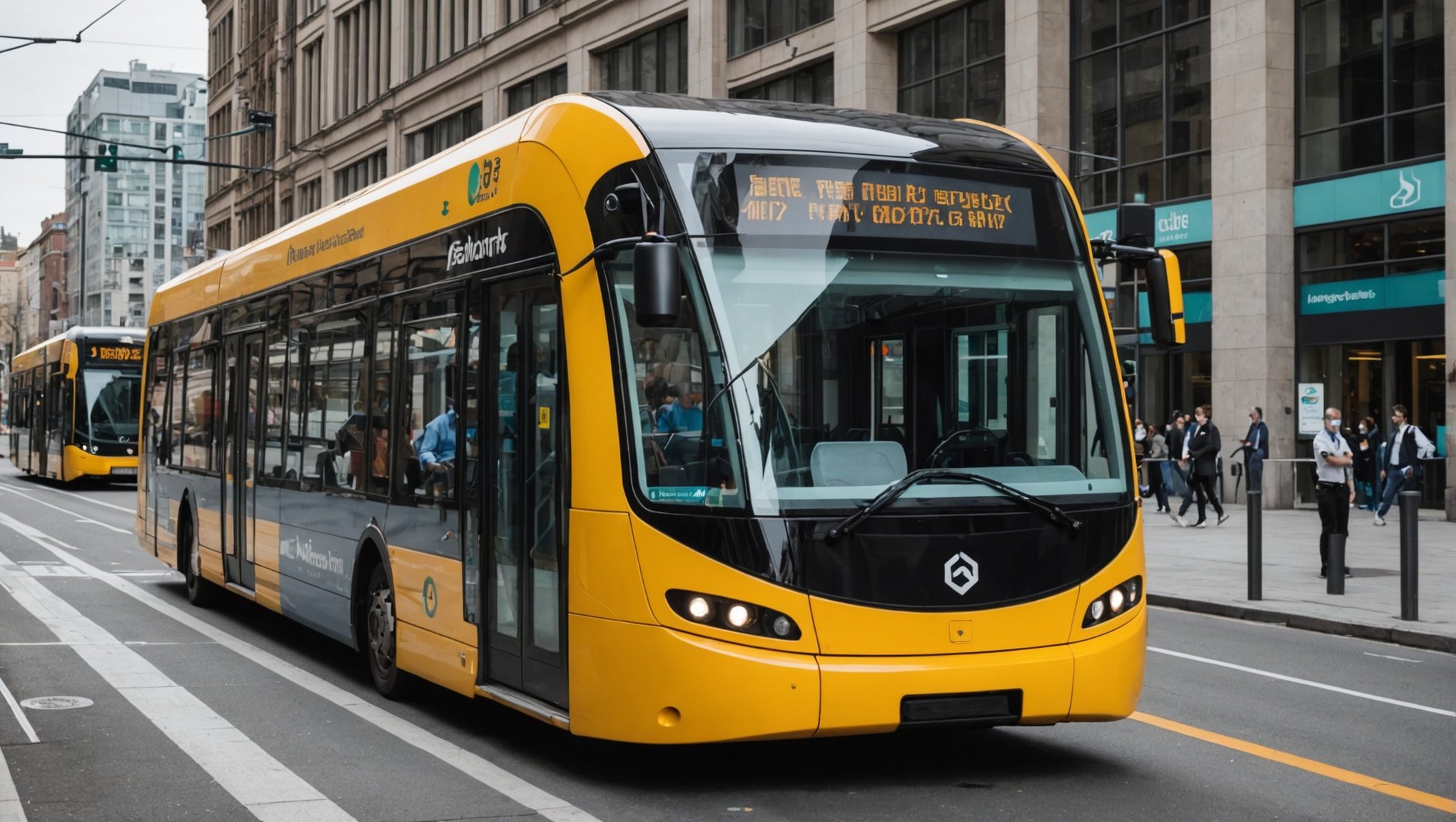Overview of AI in Autonomous Public Transit
In the realm of autonomous transit systems, the application of AI algorithms is a groundbreaking advancement. These algorithms are pivotal in navigating, managing, and enhancing the efficiency of public transportation. How exactly do AI algorithms optimize these systems? They accomplish this by processing vast amounts of data from sensors and engagement points to make real-time decisions, ensuring seamless transit operations.
Autonomous transit systems have evolved significantly in recent years, comprising a range of vehicles from buses to trains. These systems leverage AI to handle complex tasks such as route optimization and fleet management, thereby reducing operational costs and improving user experience. Each autonomous vehicle incorporates advanced algorithms that assimilate environmental data, adapt to traffic conditions, and make navigation safer and more efficient.
In parallel : Revolutionizing Manufacturing: How AI Can Streamline and Enhance Supply Chain Management
A crucial aspect of deploying AI in public transportation is safety enhancement. Why is safety considered paramount in these systems? Safety is critical to gaining public trust, and AI plays a significant role in it. Systems are equipped with safety features like collision avoidance and emergency braking, which are guided by AI to minimize human errors. As a result, AI not only streamlines operations but also significantly bolsters the safety and reliability of autonomous public transit.
Mechanisms of Safety Enhancement through AI Algorithms
The integration of AI technology in various safety mechanisms has brought transformative improvements. Real-time data analysis plays a crucial role in hazard detection. For example, through continual monitoring and processing, AI can identify potential risks before they escalate into significant dangers. This ability to analyze data instantaneously, while continuously updating, enhances the responsiveness of safety systems.
Also read : Revolutionizing Urgent Care: The Role of AI Diagnostic Tools in Accelerating Patient Assessments
In the realm of predictive modeling, AI facilitates accident prevention by forecasting potential incidents based on patterns and historical data. These algorithms can anticipate failures in equipment or systems, allowing for timely maintenance or intervention to preempt accidents.
During emergencies, decision-making algorithms are critical. AI analyzes available data to provide rapid, effective responses to unforeseen scenarios, optimizing safety measures and minimizing impacts. This real-time adaptation is vital, ensuring that safety mechanisms can act swiftly and appropriately in critical situations.
By leveraging these advanced technologies, organisations embrace risk reduction strategies that are not only innovative but essential in promoting a safer environment. As AI continues to evolve, its role in enhancing safety mechanisms will undoubtedly expand, providing further layers of protection and risk mitigation. This technology not only augments human oversight but consistently champions security at every level.
Case Studies of AI Implementation in Transit Systems
The adoption of autonomous transit projects has seen varied successes across the globe, driven by innovative AI approaches. Notable case studies include Singapore’s autonomous buses, which have shown promise in integrating AI with traditional transit models. These projects highlight lessons learned, such as the importance of a robust AI framework, ensuring safety and improving commuter experience.
In the United States, successful implementations like Waymo’s self-driving taxi service showcase a different approach, focusing more on reducing human intervention while maintaining safety and efficiency. Comparing AI approaches in these regions unveils significant diversity in strategies and objectives. Singapore emphasizes seamless integration into existing networks, whereas the U.S. prioritizes cutting-edge technology applications.
One key takeaway is the necessity for rigorous testing and regulatory compliance, as seen in both regions. This ensures that public safety remains paramount while allowing room for innovation. Additionally, these cases have illuminated the importance of public awareness and acceptance, which are crucial for widespread adoption.
Furthermore, the implications of these successful implementations suggest that future transit systems must adopt a balanced approach. They should embrace AI technologies while maintaining transparency and accountability to gain public trust and enhance urban mobility. The lessons learned from these projects serve as a guiding framework for other cities contemplating the leap into AI-driven transit solutions.
Challenges in Implementing AI for Public Transit Safety
Implementing AI in public transit safety is laden with implementation challenges and AI limitations. These issues stem from technical hurdles in software development. Developing reliable AI-driven systems requires overcoming substantial complexities, including vast amounts of data processing and ensuring error-free operations. For instance, AI models need to learn and adapt to various scenarios to improve decision-making but might face limitations due to insufficient or imbalanced training data, which could heighten safety concerns.
Beyond the technical realm, public perception plays a significant role. Trust in AI-driven systems isn’t easily earned, particularly when safety is at stake. People may question the reliability and transparency of these systems, emphasizing the need for well-communicated demonstrations of AI capabilities and value. Safety concerns compound when potential biases in algorithmic decision-making come to light. These biases might arise from pre-existing prejudices in the training data, leading to unfair or dangerous outcomes if not adequately managed.
Navigating these implementation challenges requires addressing both technical and societal aspects comprehensively. Only by ensuring data accuracy and transparency can AI mitigate biases, and earn public trust, ensuring advances in public transit safety align with societal expectations.
Ethical Considerations in Autonomous Transit
The deployment of autonomous transit systems brings forth numerous ethical implications. These systems must navigate the complex landscape of decision-making without human intervention, which raises concerns about how these decisions align with societal values. Ethical dilemmas may arise when AI systems must choose between actions that involve risk or harm, necessitating well-defined protocols to address such situations.
Beyond decision-making, AI ethics in public transport require comprehensive governance. Regulatory frameworks need to ensure that AI applications uphold safety, equity, and transparency standards. It is imperative for these regulations to not only mitigate risks but also promote innovation within ethical boundaries.
Stakeholder engagement plays a crucial role in shaping ethical frameworks. By involving a diverse group of stakeholders, including citizens, government bodies, and technology developers, a balanced perspective can be garnered. This collaborative approach ensures that the systems implemented reflect the community’s values and priorities.
The purposeful governance of these technologies can facilitate the responsible deployment of autonomous transit. Addressing ethical implications with a robust framework ensures public trust and acceptance of these transformative systems. Recognising and responding to ethical challenges can advance the benefits and functionalities of autonomous transit while safeguarding public interest.
Future Trends in AI-Driven Autonomous Transit Safety
The realm of autonomous public transport is poised for a transformation due to upcoming technological advancements in AI algorithms. These emerging technologies promise to enhance both efficiency and safety. Notably, future developments focus on creating more adaptive systems that can better manage real-world unpredictabilities, such as weather conditions and traffic patterns.
Predictions for the future suggest that autonomous vehicles will increasingly rely on machine learning techniques to continually learn and improve. This ongoing adaptation is essential for maintaining high safety standards. As algorithms become more sophisticated, their capacity to preemptively detect and react to potential hazards is expected to surge.
Furthermore, safety innovations will pave the way for more robust communication between vehicles and infrastructure. This integration aims to create a seamless flow of information which can help in responding to emergencies swiftly and effectively. With these developments, public transport systems will not only become safer but also more responsive to commuter needs.
However, the importance of continuous improvement cannot be overstated. Staying ahead in technology requires commitment to adaptation in safety protocols. By embracing these advancements, autonomous transit will continue to provide secure and reliable transportation solutions. This focus on progression ensures the sustained trust and confidence of the public.
















